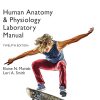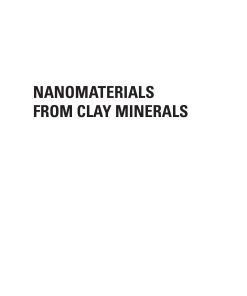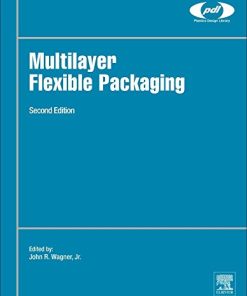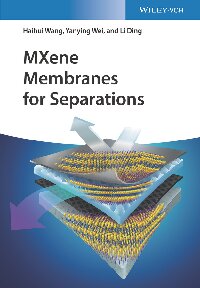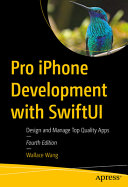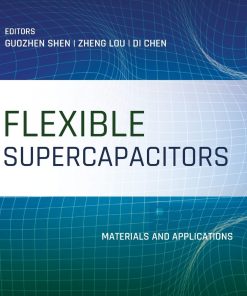Flexible Bronchoscopy 4th Edition by Ko Pen Wang, Atul Mehta, Francis Turner 1119389217 9781119389217
$50.00 Original price was: $50.00.$25.00Current price is: $25.00.
Flexible Bronchoscopy 4th Edition by Ko-Pen Wang, Atul C. Mehta, J. Francis Turner Jr. – Ebook PDF Instant Download/DeliveryISBN: 1119389217, 9781119389217
Full download Flexible Bronchoscopy 4th Edition after payment.
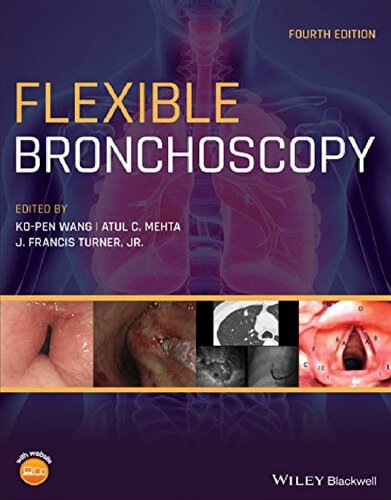
Product details:
ISBN-10 : 1119389217
ISBN-13 : 9781119389217
Author: Ko-Pen Wang, Atul C. Mehta, J. Francis Turner Jr.
In this fourth edition of the popular Flexible Bronchoscopy, which has been revised and updated throughout, the world’s leading specialists discuss the technical and procedural aspects of performing diagnostic and therapeutic bronchoscopy. Four new chapters have been added, taking into account new developments in EBUS and electromagnetic navigation.
Flexible Bronchoscopy 4th Table of contents:
1 A Short History of Flexible Bronchoscopy
1.1 Introduction
1.2 Shigeto Ikeda and the Invention of the Flexible Bronchoscope
1.3 Further Development of Flexible Endoscopes
1.4 Further Developments in Flexible Bronchoscopy
1.5 Current Concepts and Strategies in Flexible Bronchoscopy
1.6 Detection and Staging of Early Lung Cancer in the Central Airways
1.7 Diagnosing and Staging of Advanced Lung Cancer
1.8 Tumors of the Central Airways: From Palliation to Cure
1.9 Diagnosis and Treatment of Peripheral Lung Cancer
1.10 Parenchymal Lung Disease
1.11 Treatment of Lung Function Disorders: Emphysema and Asthma
1.12 The Future of Flexible Bronchoscopy
References
2 Professor Ikeda’s Genius
2.1 Professor Shigeto Ikeda (1925–2001): The Father of Flexible Bronchoscopy
2.2 Flexible Bronchoscopy Training and Education
2.3 Bronchoscopy Simulation
2.4 Interventional Pulmonology and Bronchoscopy Training
2.5 Conclusion
References
3 Applied Anatomy of the Airways
3.1 The Pharynx and Larynx
3.2 The Tracheobronchial Tree
3.3 The Relationship of Airways to Lymph Nodes and Vessels
References
4 Infection Control and Radiation Safety in the Bronchoscopy Suite
4.1 Infection Control
4.2 Radiation Safety
4.3 Conclusion
References
5 Anesthetic Management for Diagnostic and Therapeutic Bronchoscopy
5.1 Introduction
5.2 Preanesthetic Evaluation
5.3 Monitoring and Equipment
5.4 Anesthetic Agents Commonly Used in Bronchoscopy
5.5 Regional Anesthetic Technique for Airway Anesthesia for Awake Intubation or Flexible Bronchoscopy
5.6 Neuromuscular Blockade
5.7 Sedation Management of Different Bronchoscopic Procedures
5.8 Airway Management
5.9 Special Topics
5.10 Emergencies
5.11 Conclusion
Acknowledgments
References
6 Indications and Contraindications in Flexible Bronchoscopy
6.1 Introduction
6.2 Cough
6.3 Wheezing
6.4 Stridor
6.5 Hoarseness and Vocal Cord Paralysis
6.6 Inhalational Injury
6.7 Hemoptysis
6.8 Superior Vena Cava Syndrome
6.9 Mediastinal Mass
6.10 Interstitial Lung Disease
6.11 Infection
6.12 Lobar Collapse
6.13 Pleural Effusions
6.14 Chest Trauma
6.15 Lung Transplantation
6.16 Bronchography
6.17 Pulmonary Nodules
6.18 Lung Masses and Mediastinal Adenopathy
6.19 Therapeutic Bronchoscopy
6.20 Contraindications
References
7 Radial‐Probe Ultrasonography in Flexible Bronchoscopy
7.1 Introduction
7.2 Step‐by‐Step Procedure of EBUS‐GS
7.3 Advancements in EBUS for Peripheral Pulmonary Lesions
7.4 Future Prospects
References
8 Convex‐Probe Ultrasonography in Flexible Bronchoscopy
8.1 Convex‐Probe Endobronchial Ultrasound
8.2 Future Directions for CP‐EBUS
8.3 Conclusion
References
9 Early Diagnosis of Lung Cancer
9.1 Introduction
9.2 Principles of Photonic Imaging
9.3 Autoflorescence Bronchoscopy
9.4 Narrow‐band Imaging
9.5 Optical Coherence Tomography
9.6 Laser Raman Spectroscopy
9.7 Conclusion
References
10 Electromagnetic Navigation Bronchoscopy
10.1 Introduction
10.2 Historical Aspects
10.3 Technical Components
10.4 Performance
10.5 Complications
10.6 Therapeutic Applications
10.7 Conclusion
References
11 Virtual Bronchoscopic Navigation
11.1 Introduction
11.2 Definition
11.3 History and Development
11.4 Technique
11.5 Discussion
11.6 Conclusion
References
12 Indirect Laryngoscopy
12.1 The Airway History
12.2 Physical Examination: Focused Evaluation of the Airway
12.3 Medical Comorbidity
12.4 Pathological Conditions
12.5 Craniomaxillofacial Trauma
12.6 Pharyngeal Anatomy
12.7 Laryngeal Anatomy
References
13 Bronchoscopy for Airway Lesions
13.1 Introduction
13.2 Prevalence and Endoscopic Appearance of Bronchial Lesions
13.3 Adjuvant Imaging Techniques
13.4 Techniques for Sampling and Preparation of Specimens
13.5 Results of Procedures and Combination of Methods
13.6 Results for Endobronchial Biopsies in Visible Tumors
13.7 Results for Brushing
13.8 Results for Washing
13.9 Results of Combination
13.10 Complications
13.11 Cost‐Effectivenes
13.12 Conclusions and Suggestions for Strategy
References
14 Bronchoalveolar Lavage
14.1 Technique
14.2 Safety and Complications
14.3 Sample Processing
14.4 Clinical Utility
14.5 Conclusion
References
15 Bronchoscopic Lung Biopsy
15.1 Introduction
15.2 Indications for Bronchoscopic Biopsy
15.3 Contraindications
15.4 Preprocedure Evaluation
15.5 Technique
15.6 New Techniques
15.7 Special Patient Groups
References
16 Transbronchial Needle Aspiration for Cytology and Histology Specimens
16.1 Introduction
16.2 Historical Overview
16.3 Instruments
16.4 Relevant Anatomy
16.5 TBNA in Mediastinal Diseases
16.6 Electromagnetic Navigation Bronchoscopy
16.7 Virtual Bronchoscopy
16.8 Bronchoscopic Transparenchymal Nodule Access
16.9 Conclusion
References
17 Staging of Bronchogenic Carcinoma
References
18 The Future of Interventional Pulmonology
18.1 Introduction
18.2 Translational Research Conceptual Framework
18.3 Challenges to Carrying Out Translational Research
18.4 Applying the Translational Research Framework to Interventional Pulmonology
18.5 Conclusion
References
19 Application of Laser, Electrocautery, Argon Plasma Coagulation, and Cryotherapy in Flexible Bronchoscopy
19.1 Introduction
19.2 Types of Laser
19.3 Electrocautery
19.4 Argon Plasma Coagulation
19.5 Cryotherapy
19.6 Highlights and Recommendations for Practice
References
20 Flexible Bronchoscopy and the Application of Endobronchial Brachytherapy, Fiducial Placement, Radiofrequency Ablation, and Microwave Ablation
20.1 Brachytherapy
20.2 Fiducial Marker Implantation
20.3 Radiofrequency Ablation
20.4 Microwave Ablation
References
21 Foreign Body Aspiration and Flexible Bronchoscopy
21.1 Introduction
21.2 Risk Factors
21.3 Clinical Presentation
21.4 Foreign Body Types
21.5 Radiological Evaluation
21.6 Delays in Diagnosis
21.7 Complications of Foreign Body Aspiration
21.8 Therapeutic Approach to the Patient with Foreign Body Aspiration
21.9 Case Presentation
References
22 The Role of Bronchoscopy in Hemoptysis
22.1 Definitions of Massive and Nonmassive Hemoptysis
22.2 Causes of Hemoptysis
22.3 Pathophysiology of Hemoptysis
22.4 Diagnostic Utility of Bronchoscopy in Hemoptysis
22.5 Therapeutic Role of Bronchoscopy in Hemoptysis
22.6 Bronchoscopy‐Induced Massive Hemoptysis
References
23 Endobronchial Stents
23.1 Overview and History
23.2 Engineering and Materials
23.3 Biomechanical Properties
23.4 Physiological Rationale for Airway Stenting
23.5 Indications
23.6 Contraindications to Stent Insertion
23.7 Stent Types and Insertion Requirements
23.8 New Models of Metallic Stents
23.9 Stent‐Related Adverse Events
23.10 Considerations for Stent Removal
23.11 Future Directions
23.12 Special Considerations
23.13 Follow‐Up after Stenting
23.14 Final Considerations
References
24 Balloon Bronchoplasty
24.1 Introduction
24.2 Indications
24.3 Technique
24.4 Other Methods of Dilation
24.5 Complications
24.6 Outcomes
24.7 Conclusion
References
25 Rigid Bronchoscopy
25.1 Introduction
25.2 Equipment
25.3 Indications and Contraindications
25.4 Anesthesia
25.5 Technique
25.6 Complications
25.7 Training Goals
25.8 Conclusion
References
26 Pediatric Flexible Bronchoscopy
26.1 Introduction
26.2 Preprocedural Considerations
26.3 Bronchoscopy Procedure
26.4 The Operation of Bronchoscopy
26.5 Diagnosis and Treatment of Children’s Lung Diseases
26.6 Indications and Contraindications of Pediatric Bronchoscopy
26.7 Differential Diagnosis
26.8 Airway Management
26.9 Common Complications and Management of Bronchoscopy
References
27 Bronchoscopy in the Intensive Care Unit
27.1 Introduction
27.2 Flexible Bronchoscopy
27.3 Indications
27.4 Equipment
27.5 Sedation and Anesthesia
27.6 Bronchoscopy in Patients on Mechanical Ventilation
27.7 Complications
27.8 Airway Management
27.9 Diagnostic Bronchoscopy
27.10 Therapeutic Bronchoscopy
27.11 Conclusion
References
28 Bronchial Thermoplasty Management of Asthma
28.1 Introduction
28.2 Pathophysiological Rationale
28.3 Overview and Supporting Clinical Data
28.4 Patient Selection
28.5 Performing the Procedure
28.6 Long‐term Outcomes and Future Directions
28.7 Conclusion
References
29 Endoscopic Management of Emphysema
29.1 Introduction
29.2 Unidirectional Valves
29.3 Coils
29.4 Sclerosing Agents
29.5 Patient Selection and Proposed Algorithm
29.6 Conclusion
References
30 Endoscopic Management of Bronchopleural Fistulas
30.1 Etiology and Incidence
30.2 Clinical Presentation and Diagnosis
30.3 Traditional Treatment
30.4 Bronchoscopic Management
30.5 Conclusion
References
31 Clinical Management of Benign Airway Stenosis and Tracheobronchomalacia
31.1 Epidemiology and Etiology
31.2 Presentation
31.3 Diagnostic Evaluation
31.4 Classification
31.5 Treatment
People also search for Flexible Bronchoscopy 4th:
difference between rigid and flexible bronchoscopy
rigid and flexible bronchoscopy
flexible bronchoscopy cpt code
pediatric flexible bronchoscopy
atlas of flexible bronchoscopy
Tags: Flexible, Bronchoscopy, Ko Pen Wang, Atul Mehta, Francis Turner
You may also like…
Uncategorized
Engineering
Multilayer Flexible Packaging 2nd Edition by John Wagner 0323477186 9780323371001 9780323477185
Climatology
Engineering - Industrial Engineering & Materials Science
Engineering - Electrical & Electronic Engineering
Computers - Programming
Pro iPhone Development with SwiftUI: Design and Manage Top Quality Apps (4th Edition)
Engineering - Mechanical Engineering & Dynamics


